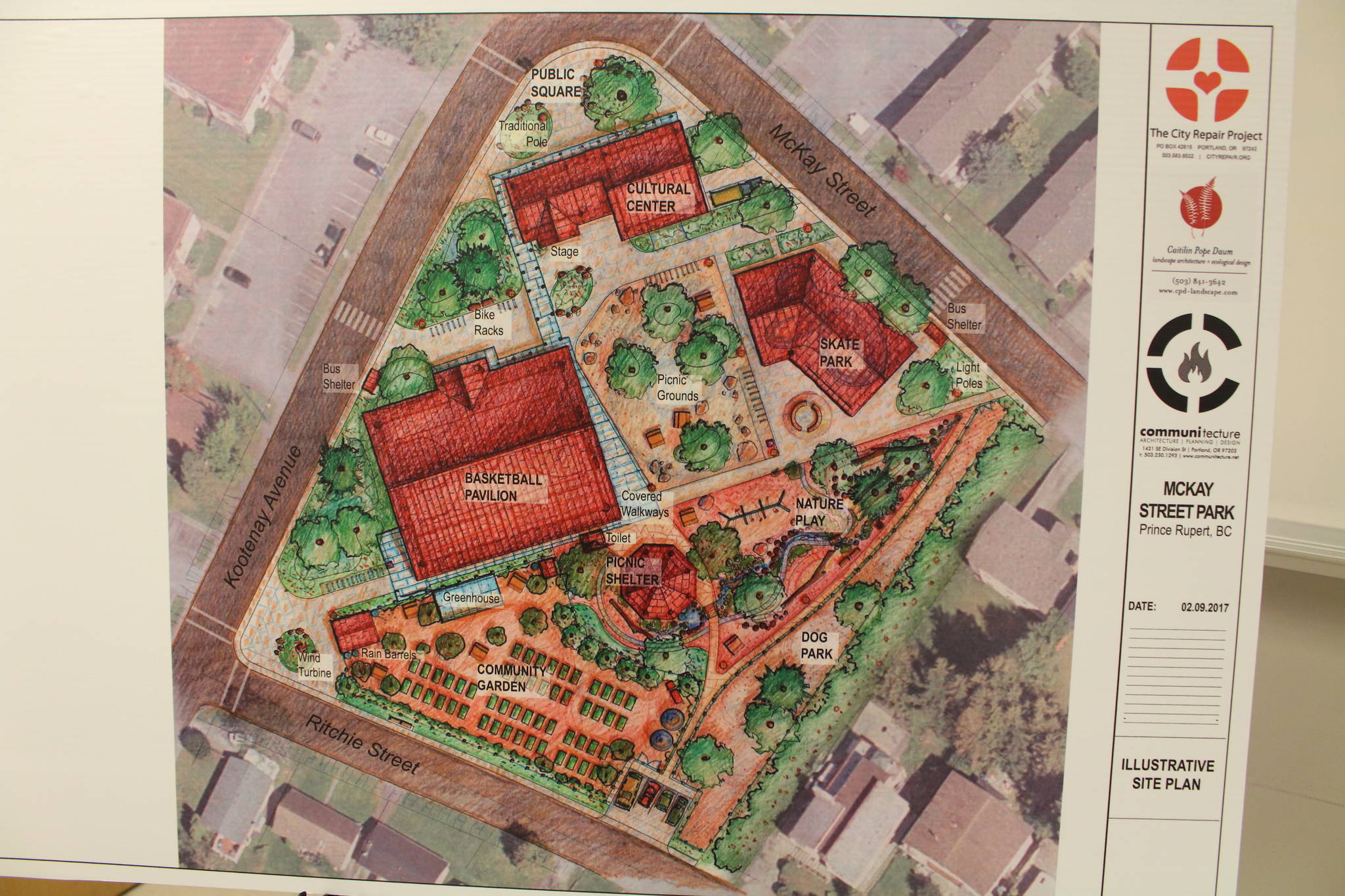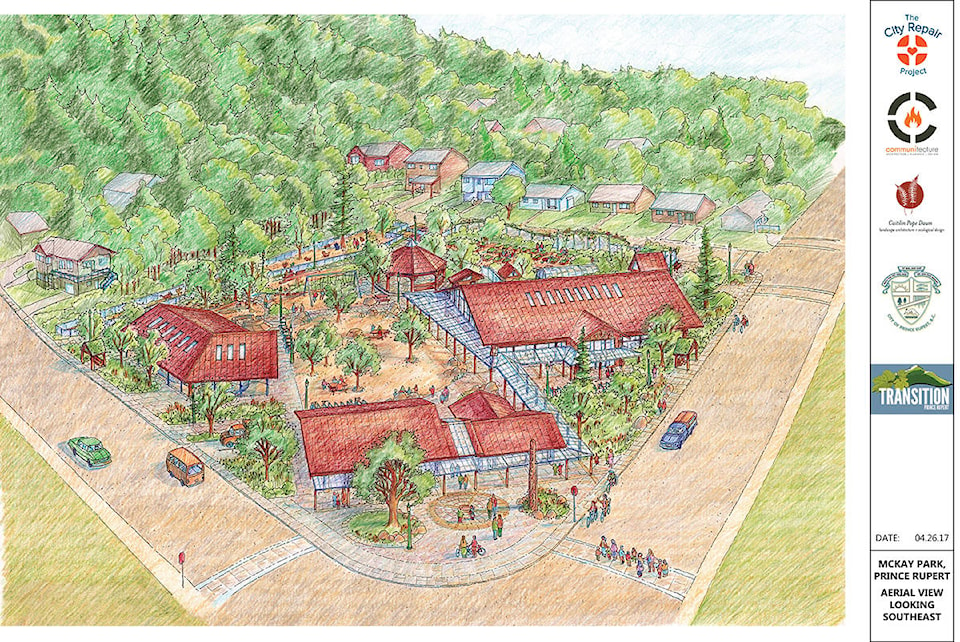Transition Prince Rupert revealed the grand designs for the brand new Mckay Street Park on April 25, and everyone from basketball-ers, skaters, gardeners, and young tots should be excited about what’s to come.
In a two-acre design featuring a cultural centre, skate park, basketball pavilion, dog park, nature play area, picnic grounds and a public square, Transition Prince Rupert president Ken Shaw, vice-president Veronika Stewart and director George Emes went over the multiple highlights of the park – a shining example of the concept of ‘placemaking’, said Stewart.
“It’s essentially a multi-faceted approach to planning, design and management of public spaces and it capitalizes on a community’s assets, and potential for creating public spaces that actually mean things to people that live there. People are involved in all of the processes of designing, building and then using the space afterward, and it means more to the people who live there,” she added.
Placemaking, a concept developed by sustainable public places expert and The City Repair Project (Mckay Street co-designer) creative director Mark Lakeman, is found throughout the entire design.
From covered walkways with transparent roofs allowing natural lighting, to the community garden with a greenhouse, rain barrels for watering the plants, and a carving shed, the new Mckay Street Park is designed for the community to have a stake in the project – from its creation to its use.
“What we’re hoping for is creating a park where people are going at all times of the year, any time of day, for a whole variety of reasons. The place would always be populated, and that would reinforce creating a safe and enjoyable spot,” said Shaw.
Over the past eight months, The City Repair Project, Transition and stakeholders have been paring down suggestions from the community that came last fall as to what they wanted to see included, and have come up with this final design from three different conceptual plans presented in September 2016.
Stewart added that the main asks from people in the community were a covered basketball pavilion and skate park, a picnic area, a stage, a bus stop, a linear dog park and a cultural centre, with much lighting to brighten the area at night.
Sightlines are maintained through the large park, and a diagonal pathway cuts across the space, with similar walkways linking different aspects of the park to each other. A wind turbine and traditional carved poles also welcome visitors at different entrances.
Transition Prince Rupert presented a slide show, with Lakeman narrating through a computer the different parts of the park.
Crosswalks within perimeter roads, and a few parking spaces have been added, but the majority of the parking will come from existing street parking, said the designers.
Operation of the courts, garden and carving shed is still to be decided and opportunities to get involved are ongoing.
The price tag, when all is said, and done is $3 million. The organizers are looking to start a GoFundMe page and are reaching out to corporate and business donors in the community. Two grant applications have been submitted for picnic structures, and the project has been submitted to a BCAA Play Here contest, where three winning parks, playgrounds or sporting facilities will receive $100,000 for their project. Top ten voting occurs from May 22 to June 18, should the Mckay Street Park project make it that far.
Shaw said that while the $3 million can’t be generated immediately, the park can be built in phases, ideally the team would like to do as much as they can at once, since the elements support each other. Site clearing will be the first priority.
“If there is one aspect of sustainable culture that people celebrate, it’s to bring nature and humanity back together again, so we can regain our senses and care more about each other and the rest of the world,” said Lakeman.
“In that sense, this park is an exemplary project … to help Prince Rupert be an example to the rest of the world and its own community.”
It took three years to get to this design, and it’ll take a few more to reach the fundraising goal, but community ownership over the park is the important key, said Transition founding member and Prince Rupert Mayor Lee Brain.
“The whole point of a project like this is to build the community from the bottom up, so that the community’s capacity increases … and the neighbourhood buys into it. By doing that it cuts down on vandalism and those types of issues because the kids in the neighbourhood are involved in fundraising and building this,” he said.
For those looking to get involved through donating, or volunteering time or materials, contact Transition Prince Rupert through its Facebook page of the same name.

